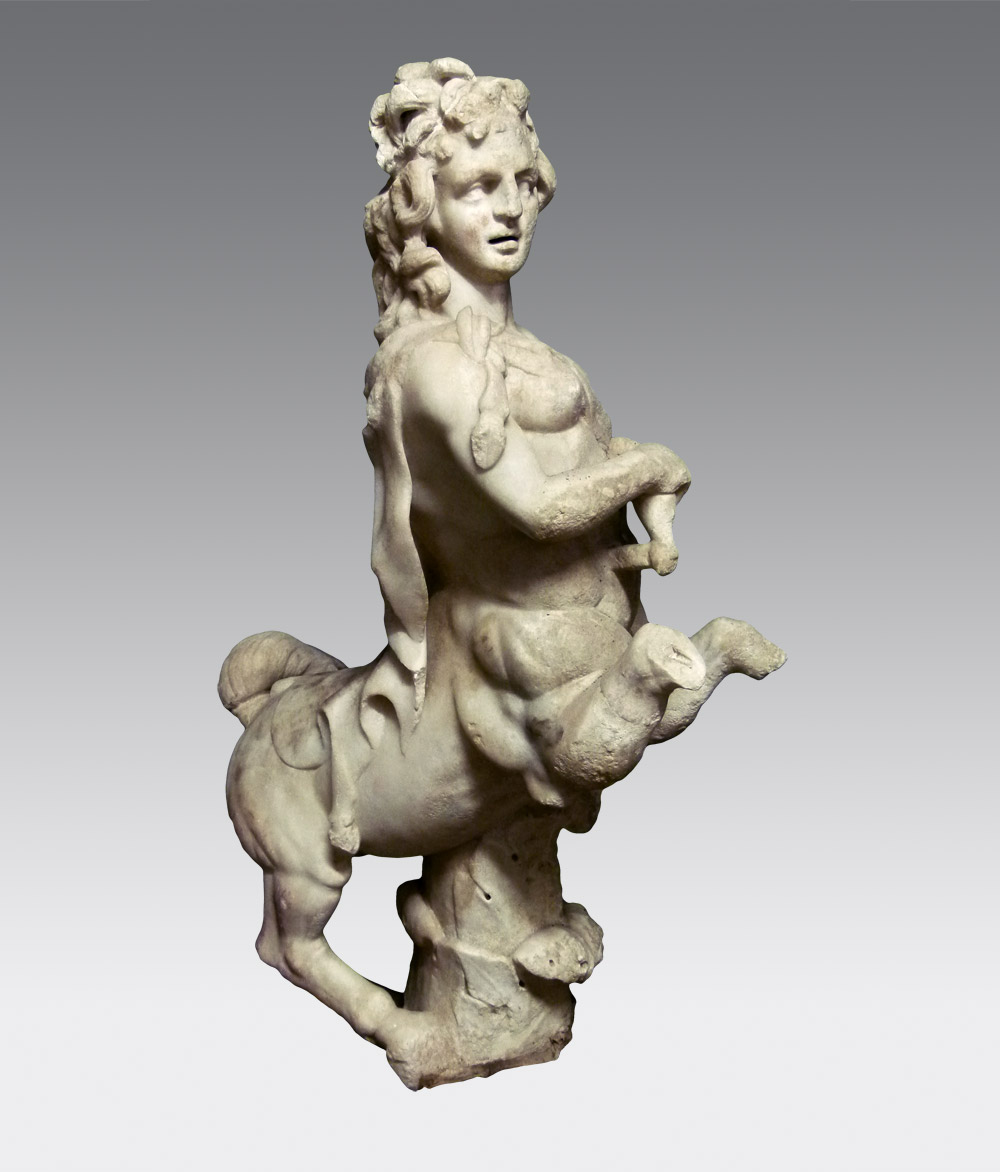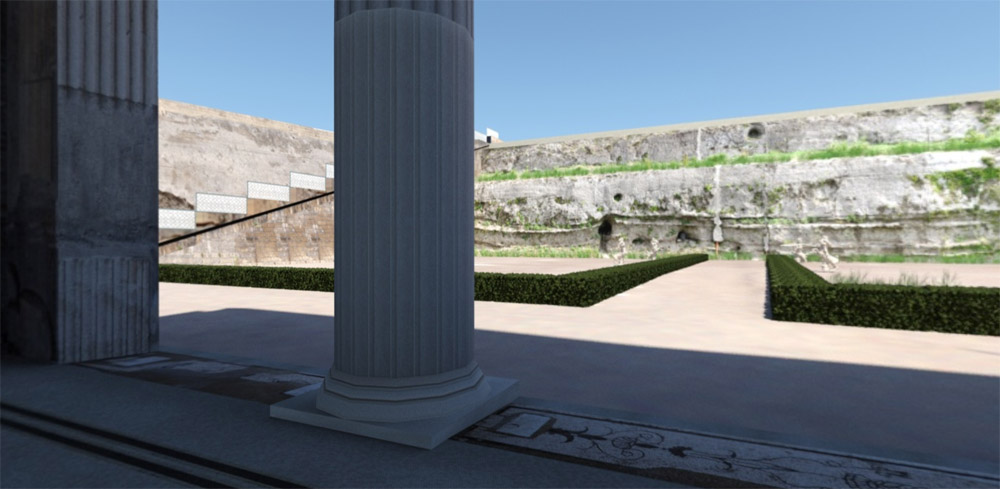
Corinthian columns were a favorite element of Roman architecture. These capitals are decorated with acanthus leaves at the bottom, a central design of flowering vines in a “lyre motif,” and volutes containing rosettes with acanthus leaves at all four corners. These Corinthian capitals originally crowned the colonnade of portico 60, though by the time Mount Vesuvius erupted the columns had been removed and the capitals were in storage.




